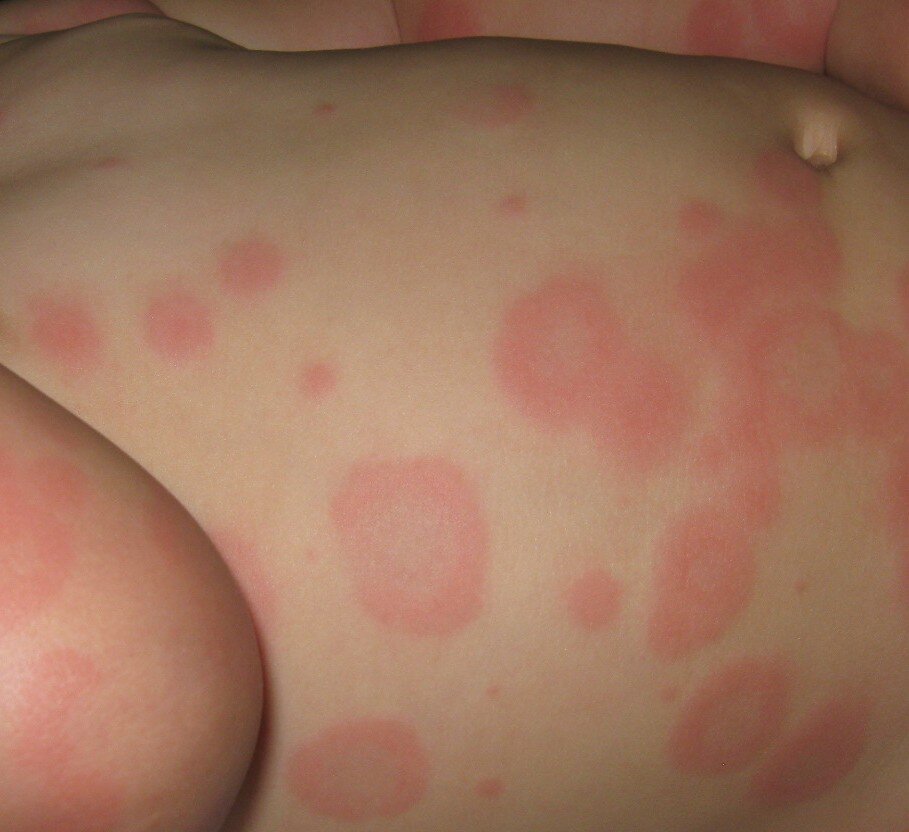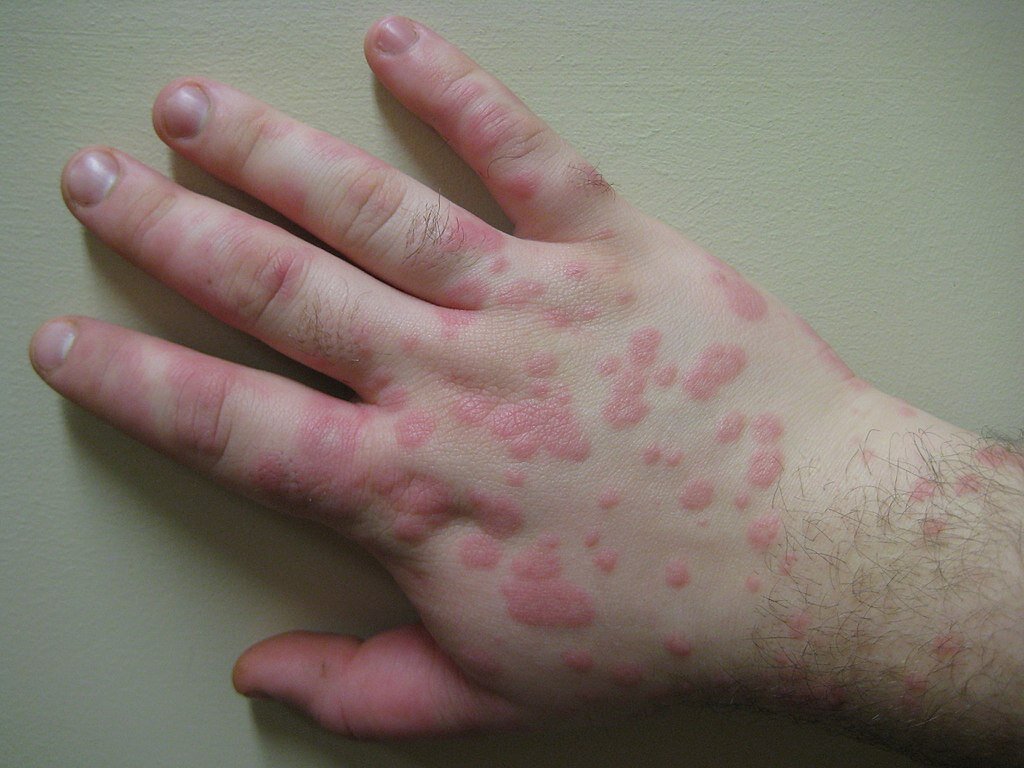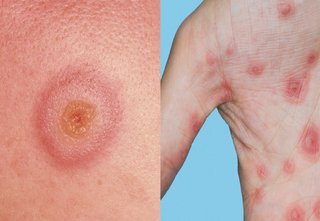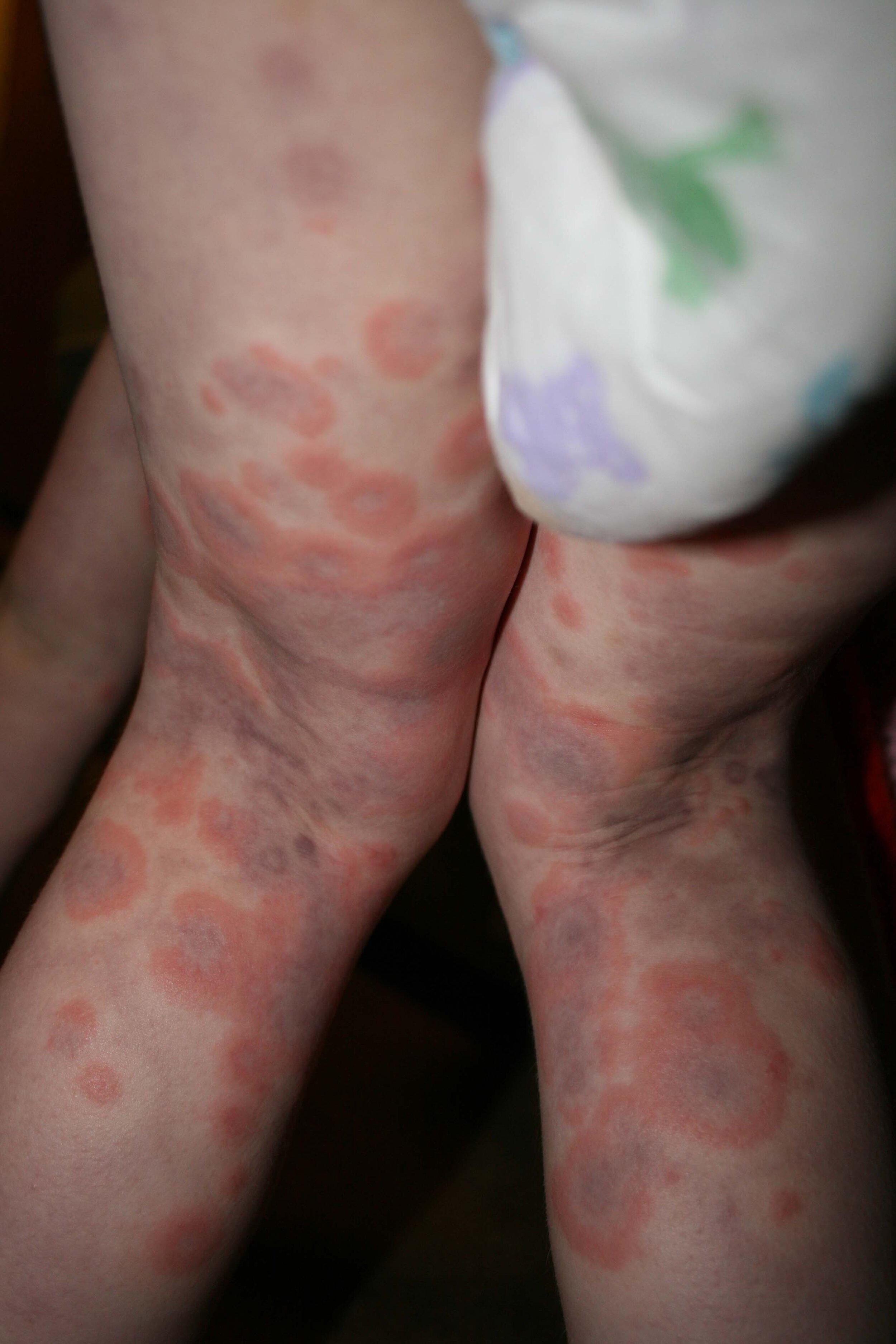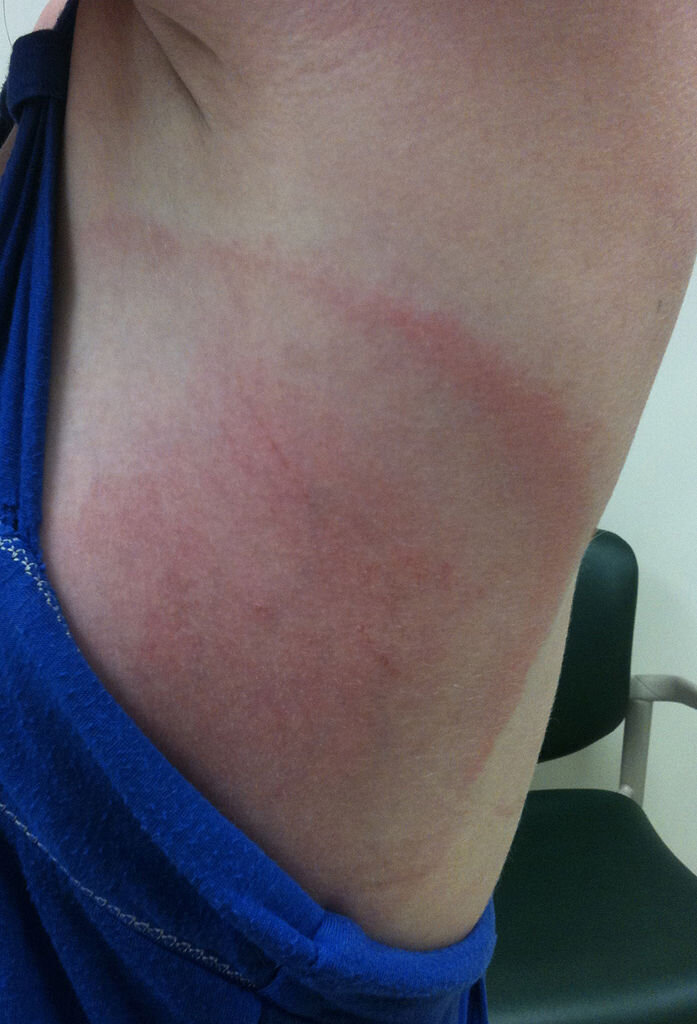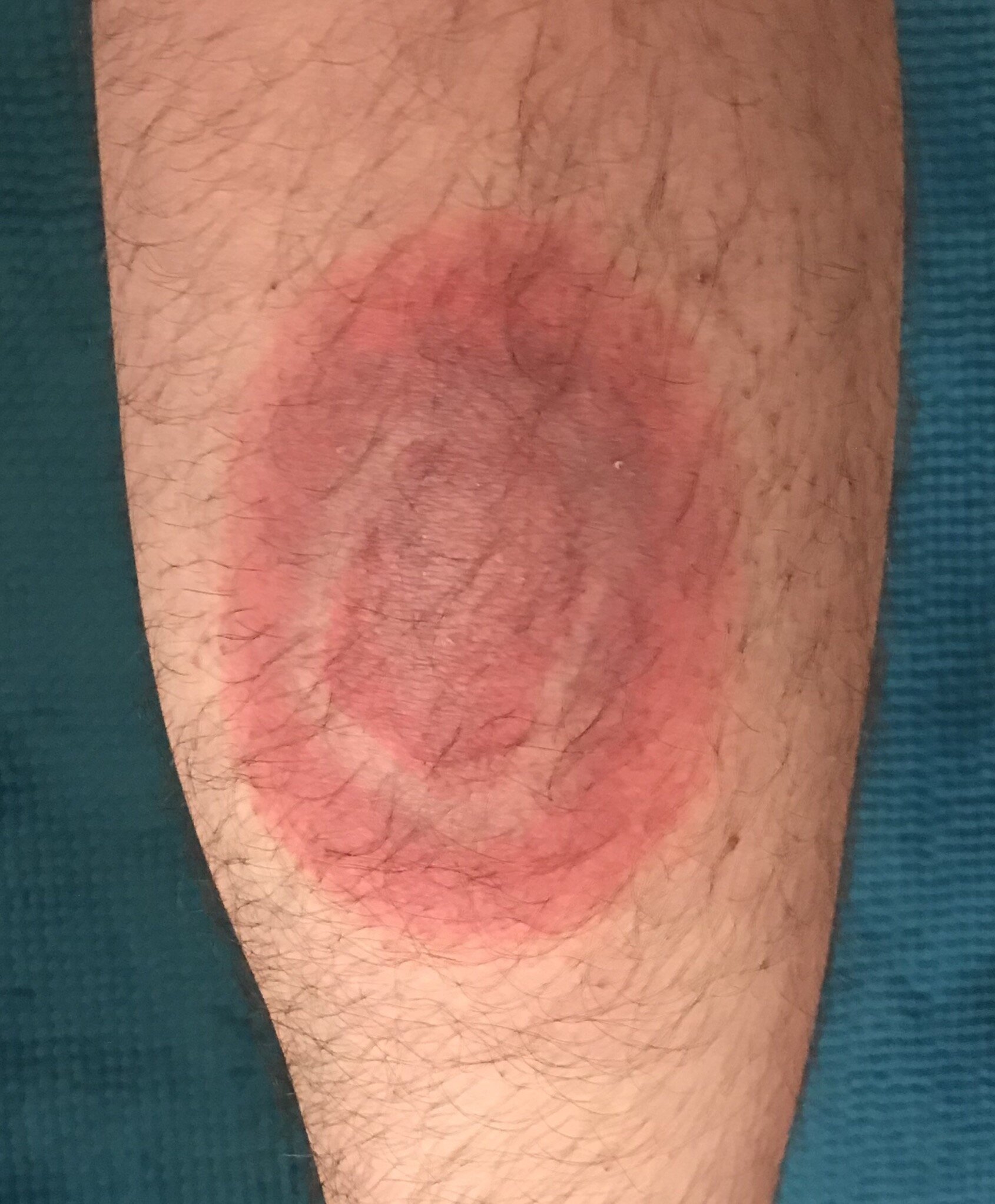Target lesion rashes: erythema migrans and erythema multiforme
Erythema multiforme
Erythema multiforme is a hypersensitivity reaction usually triggered by
infections, most commonly Herpes simplex virus (HSV), Mycoplasma pneumonia
other infectious triggers include: varicella-zoster (chickenpox, shingles), adenovirus, hepatitis viruses, human immunodeficiency virus (HIV), cytomegalovirusdrugs barbiturates, non-steroidal anti-inflammatory drugs, penicillins, sulphonamides, nitrofurantoin, phenothiazines, and anticonvulsants.
It presents with a skin eruption characterised by a typical target lesion.
It is acute and self-limiting, usually resolving without complications.
Images Courtesy of Commons Wikimedia
Erythema migrans
Erythema migrans is an expanding rash that is the initial sign of about 80% of Lyme infections. The rash may look like a "bull's eye," as pictured, in about 80% of cases in Europe and 20% of cases in the US
The EM rash appears typically one or two weeks (range 3–32 days) after the bite.
The most distinctive features of the EM rash are the speed and extent to which it expands, respectively 2–3 cm per day and up to a diameter of 5–70 cm
The EM rash is often accompanied by symptoms of a viral-like illness, including fatigue, headache, body aches, fever, and chills.
Lyme disease: erythema migrans image resource produced by NICE

